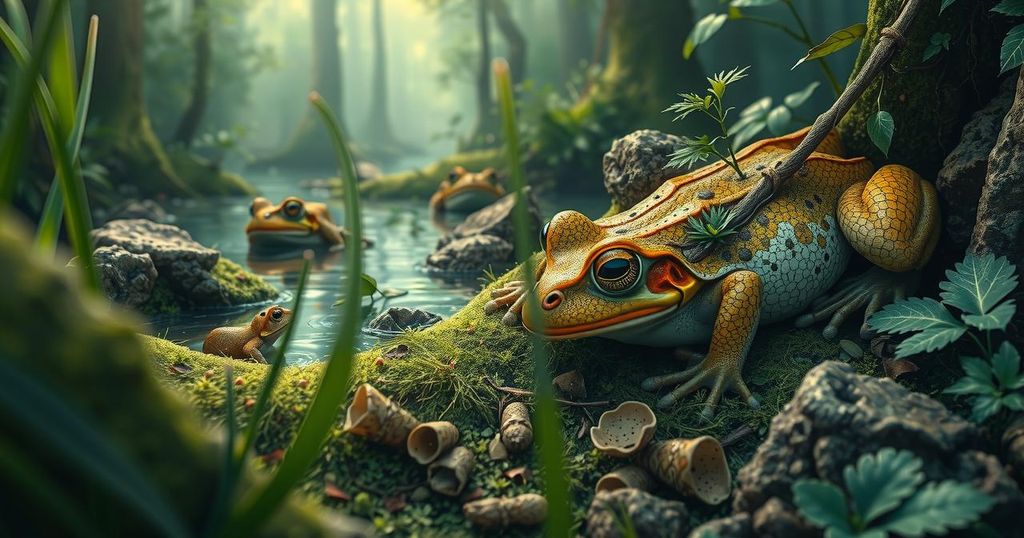A recent study reveals that climate change could cause a substantial loss of amphibian habitats, particularly for frogs and toads, with projections indicating that a temperature rise of 4°C could lead to the drying up of 33% of their habitats. As amphibians are increasingly threatened, understanding the effects of global warming on their moisture-dependent survival becomes critical.
Recent research indicates that climate change poses a significant threat to amphibian populations, particularly frogs and toads, as their crucial habitats are drying up. A study published in Nature Climate Change reveals that a rise in global temperatures by 2°C could lead to a loss of 6.6% of these habitats, while an increase of 4°C may result in a staggering 33% loss. The authors of the paper emphasize that the impact of drying climates on animal species remains insufficiently studied, especially for water-sensitive groups such as anurans, whose survival hinges on their ability to remain hydrated. The ongoing climate crisis has led to 39% of amphibian species being listed as threatened by the IUCN, with many experiencing further declines in their conservation status from 2004 to 2022. Amphibians, due to their permeable skin, depend heavily on moisture, as their ability to exchange gases through the skin is entirely reliant on a wet environment. The new research underscores the urgent need to comprehend how rising temperatures, coupled with extreme droughts, affect these sensitive species, especially in high-emission scenarios predicting temperature increases of 2-4°C between 2080 and 2100. Findings suggest that over a third (36.1%) of regions inhabited by frogs and toads will face heightened risks of drought, particularly in parts of the Americas, southern Africa, Europe, and southern Australia.
The topic of amphibian habitat loss due to climate change has gained increasing attention in the scientific community. Amphibians, which include frogs and toads, are known to be particularly vulnerable to changes in their environments due to their physiological traits. Their ability to rely on moist skin for respiration makes them highly susceptible to the impacts of increased temperatures and reduced available water. Approximately 39% of amphibian species are currently listed as threatened, indicating a critical situation that demands immediate attention. This new research serves to highlight the significant risk that climate-induced drying poses—an area which has been overlooked in previous environmental studies.
In summary, the findings from the Nature Climate Change study illustrate the alarming consequences of climate change for amphibians, particularly the drying of habitats crucial for their survival. As global temperatures continue to rise, the potential loss of significant portions of frog and toad habitats increases, highlighting an urgent need for further research and conservation efforts. The plight of amphibians serves as a stark reminder of the broader impacts of climate change on sensitive ecosystems.
Original Source: cosmosmagazine.com







